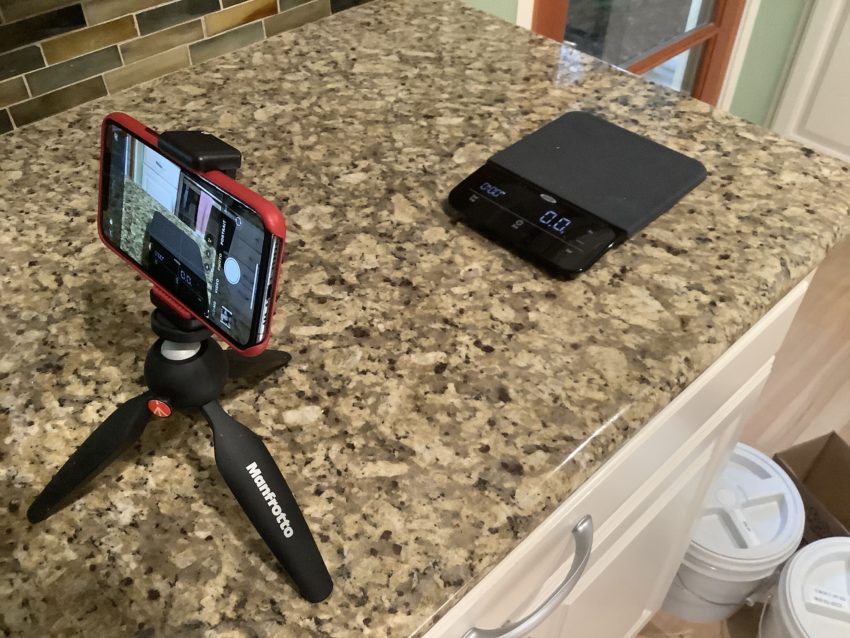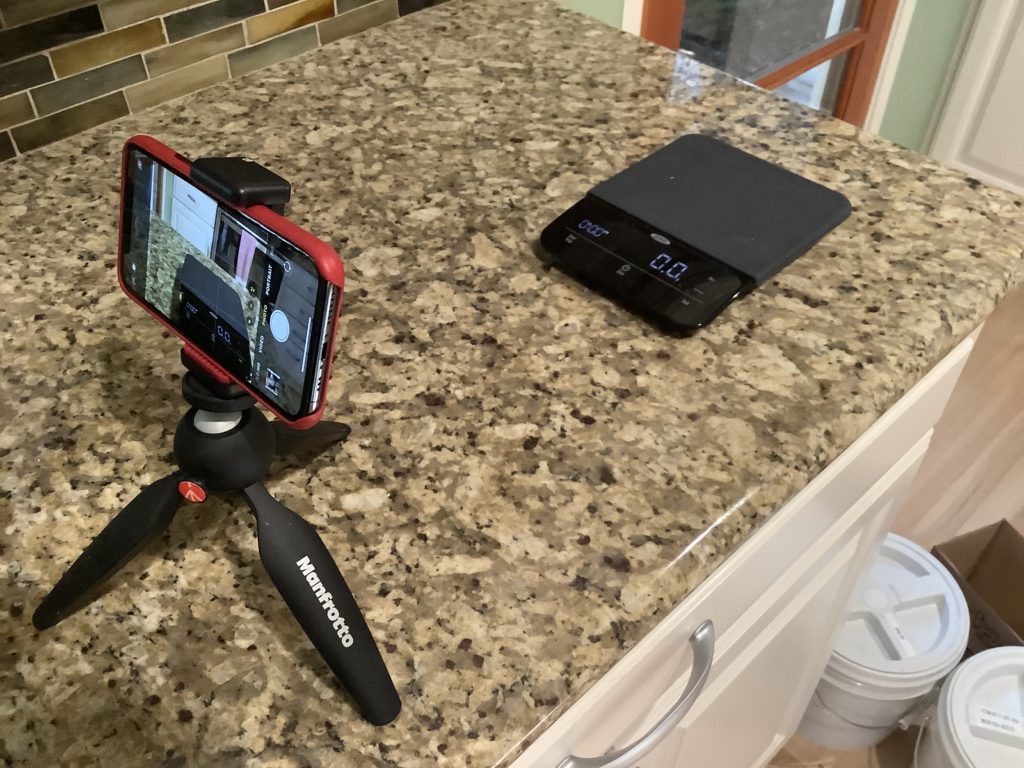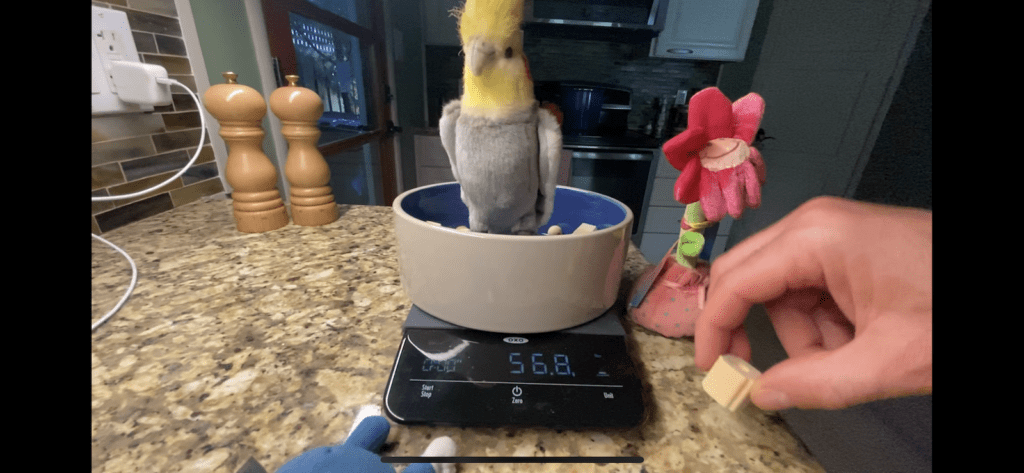
Weighing many birds with the help of a camera
I’m a big proponent of using cameras with birds to solve practical problems.
Weighing birds is a great way to keep tabs on their health and spot potential issues. It’s also another excellent example of employing cameras.
Many birds don’t like to be weighed and if you have multiple birds, it can be tedious and time-consuming to get them to cooperate. I prefer positive reinforcement methods rather than catching a bird and forcing it to stand on a scale.
So, here’s what you need:
- A scale large enough to accommodate a food bowl
- Some uncooperative birds
- Treats
Other than making it easier to record weights, a camera can solve the problem of fluctuating weight readings as birds move around.
For the purposes of making this short, I used three plush toys as stand-ins for birds and a bowl of wooden blocks to simulate the eating of treats while on the bowl.
Setup
An important part of the setup is to use a tripod and leave it there for enough time that the birds get used to it. This part could take days depending on the birds.

Once the food bowl is in place, start the camera recording video. Sometimes slo-mo can be useful as the scale can fluctuate a lot as birds hop around.
Here’s a movie I shot to get the weights of the three “birds” I used.
Here’s how I calculated the weights:
- Zero the scale with the food bowl in place
- Plush Cockatiel weighs 60.5g
- Polywhirl weighs 14.3g (74.8g – 60.5g)
- Polywhirl and Plush Cockatiel ate food, resetting Plush Cockatiel baseline weight to 56.8g
- Red Flower weighs 158.6g (215.4g – 56.8g)
- Polywhirl weight found to be 14.4g (229.8g – 215.4g), verifying the earlier weight of 14.3g
Now, this seems like a lot of math!
So, an easier way, if your birds are calm enough, is to zero the scale after obtaining the weight of one of the birds. The camera is still very useful because the birds can be quick and it may be hard to remember who was on the scale at any given time.
Another benefit of using videos is you can “scrub” (drag the play head) through the video to see specific points. Slo-mo can be an alternative to this.
This is important because you may notice that as birds move around in your food cup, the scale reading will fluctuate. The number you want is the one that keeps coming up as the bird pauses briefly. This is hard to see with the human eye, but with a camera, this becomes easier.
I’ll give two examples. When I put in Polywhirl, it initially showed 75.8g, but then settled down to 74.8g—a difference of 1g is 7% of his weight!



A second example is when I removed some of the “food” from the bowl. Note the weight reading dropped after a moment.


This is especially important when weighing really small birds like budgies or grass parakeets, which can be in the 30g or less range sometimes.
Conclusion
This may seem like a lot of work but if you have a lot of birds and don’t want to catch them to weigh them, this can be a non-intrusive way to do so. It can be a fun, regular activity for them. Perhaps you can use a unique treat only for this occasion so they look forward to it.
Weighing a bird is the best way to prevent a vet visit down the line so it’s critical that we do this for our birds as much as we can.